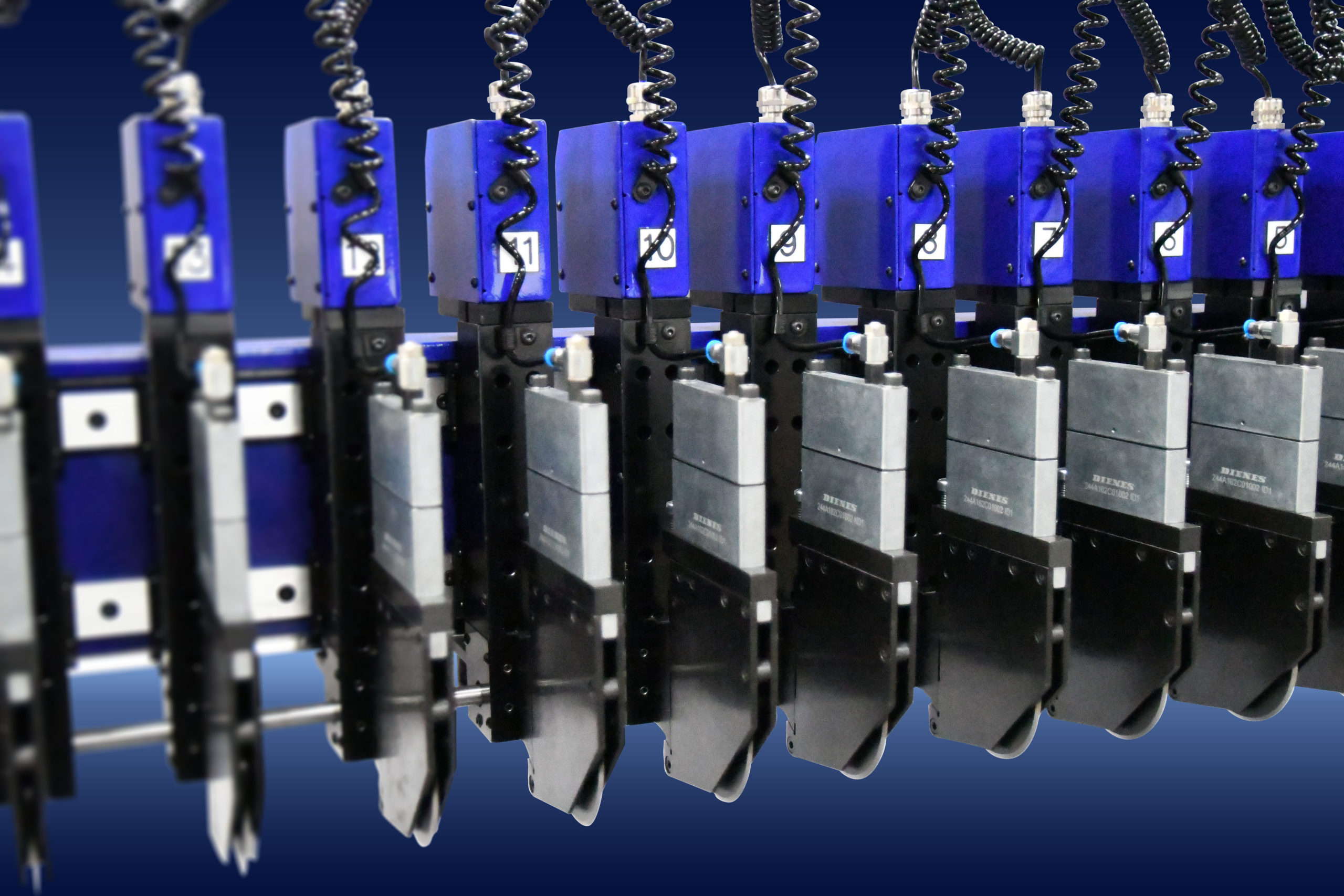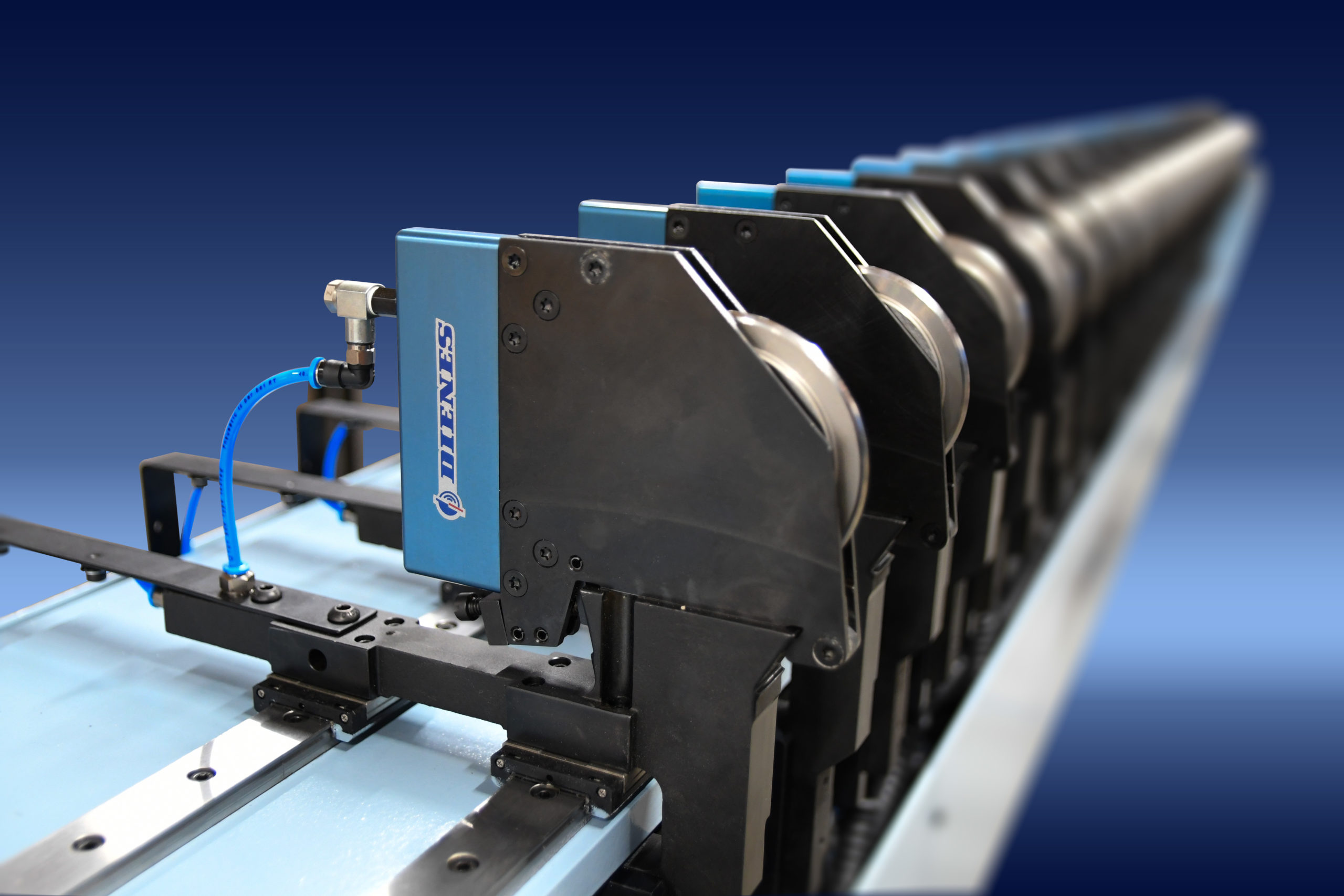
In previous blog posts, we have talked in length about the mechanics and parts involved in score cutting/slitting. We have also discussed some of the factors to consider when buying a new holder. Blade wobble and performing a resharpening process on the score cut knives are among the top considerations. So, as a result, in this article, we will go over the 5 problems found in score cutting.
We have not talked much about some of the problems that may be present in a score cut application. Along with reviewing some of these common problems, we will also list some of the solutions.
The 5 Problems found in Score Cutting are:
- Varying Slit Widths
- Knife Chipping and Premature Knife Wear
- Knife Holder Damage
- Anvil Damage
- Deflection in Anvil Roll
1. Varying Slit Widths for Score Cutting
Sometimes knife holders seem to be in the right position in the slitting section. However, when the resulting strips or rolls are measured, they may not be within the desired measurement or specification. So, varying slit widths is the 1st common problem out of the 5 problems found in score cutting. Also, if the tension and properties have not changed, we recommend the following steps to find the source of the problem.
- Check knives for bevel symmetry. Do you have a proper sharpening procedure?
- Check for knife wobble inside the holder. Is the knife thickness according to specs?
- Are the score cut knife and holder square/perpendicular to anvil roll?
- Check the condition of the knife holder (internals and mounting)
- Bearing and pins
- Clamping mechanisms, screws, clamping anvil, etc. causing holder to move when clamping
- Check anvil roll
- Severe grooves in the anvil, causing the knife to run in grooves or misdirected by grooves
2. Knife Chipping and Premature Knife Wear Problems
Are your knives chipping or consist of “bald” spots on their profile? Do you notice your knives need to be changed often and have premature wear in comparison to previous production runs? This issue may be a result of numerous factors.
To find the root-cause we recommend you do the following steps:
- Check the knife radius. Is it possibly too small to handle the load?
- Check the knife bevel. Is the included angle too small to handle the load?
- Check the knife material. Is the knife made from the proper material considering application? (For very abrasive materials, we recommend D2)
- Check if there is a vibration present. If so, is the anvil and/or knife radial run-out too high?
- Anvil radial, dimensional run-out do not exceed .004”
- Check the anvil and make sure it has the proper hardness of Rc (Rockwell) 63-65
- Knife Rc 61.0 – 62.5 (anvil min 0.5 Rc higher)
- make sure your score blade comes in gradual contact with the anvil. Do you have flow control valves?
- You can confirm this if you have a flat spot on the knife tip.
- Check if the knife is falling off material onto anvil surface (interrupted cut)
- Impact spikes
- Knife rides up and breaks through
- Make sure you have a proper re-sharpening process
- Check that the surface finish is 12 RMS or less, concentric pattern
- Make sure your knife tip is not softened (annealed during the sharpening process)
3. Score Knife Holder Damage
Do you notice an excessive wobble in your holder? that the holders do not mount properly? Or are you performing holder maintenance quite often? If so read the following steps, as knife holder damage is the 3rd most common problem out of the 5 problems found in score cutting.
We recommend you do the following steps:
- Check if the mounting device (dovetail bar, linear rail, etc.) is properly mounted to the support beam (should be bolted and pinned in several places).
- Check if the cross member has a sufficient cross-section to withstand holder weight and pressure applied.
- Is there no deflection?
- Check that the cross member and mounting structure is parallel with the anvil roll. After that, correct it if it’s not.
- Check the clamping hardware of the knife holder to be worn or damaged. If so, replace it.
- Make sure the dovetail bar mount has no surface damage such as divots and nicks. If it has any damage, replace it.
- Check that your holders are perpendicular to the anvil surface.
- Minimize vibration to the least bit possible. Check anvil and knife run-out radial.
- Check the air pressure on the application and for it not to exceed the maximum operating pressure allowed. Operating above the maximum operating pressure will cause holder damage.
4. Anvil Damage 
Suppose your anvil has grooves that are deeper than 0.002”. These grooves can be a major factor for some of your score cutting application problems. As a result, anvil damage is the 4th problem out of the 5 problems found in score cutting.
Grooved anvil rolls lead to a variety of problems such as:
- Premature knife wear
- Cut inconsistency,
- Poor cutting edge quality,
- Increased wear on the holder and internal components,
- And more.
Despite this, grooves on the anvil roll are one of the most common problems presented in score cutting. Some steps you can undertake to make sure your anvil roll is proper for the score cutting application are:
- Check for the knife hardness. In other words, they should be 60-62 Rockwell C.
- Check the hardness of your anvil roll; it should be 63 Rockwell C as otherwise, grooves will appear.
- Check for knife chipping. This may also lead to the knife being work-hardened and increasing its hardness beyond the range mentioned above.
- When possible, use through-hardened sleeves to make the anvil roll maintenance easier.
5. Deflection in Anvil Roll can be a Problem for Score Cutting
As we mentioned in the previous point, the anvil roll is a very critical part of the score cutting process. Therefore, it can significantly affect the outcome.
However, sometimes the anvil roll can be too small to handle the load and force applied on it by the holders. As a result, deflection is present in the roll.
In conclusion, this can lead to problems with the cut as the web is not fully supported. Also, the distribution of force is not even throughout the entire web. Therefore, we recommend checking if there is any deflection present in the anvil roll once the holders are engaged. And if so, try addressing the problem with a larger roll that can withstand applying the load.
Conclusion
Now you are familiar with some of the 5 most common problems found in score cutting. Also, you now have a guide on how to troubleshoot some of the most common problems. However, if you still have some problems regarding score cutting or want to get a second opinion, call us today. Our team of slitting experts will gladly assist you to eliminate any problem in your process. We hope you found this blog article informative. If so, follow us on LinkedIn and Facebook for more related blog posts. You can also contact us if you have any questions regarding your slitting operations.




